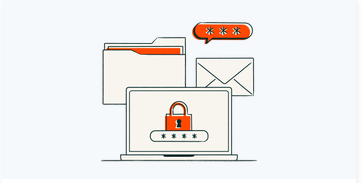Table of Contents
Prioritizing customer experience is essential for companies that want to foster long-term loyalty and drive sustainable growth. In 2025, 89% of businesses are expected to compete primarily on customer experience (CX), surpassing traditional differentiators like product and price. For RevOps teams, that shift makes CX more than a metric; it’s the new battleground for growth.
With that in mind, let’s take a look at the key components, implementation strategies, metrics, challenges, and future trends of RevOps best practices for enhancing customer experience.

TL;DR: What are the key RevOps best practices for customer experience?
-
Centralize and clean data for consistent customer insights
-
Connect touchpoints across sales, marketing, and support to streamline journeys
-
Use personalization and self-service to tailor the customer experience
-
Automate proactive outreach and follow-up to reduce churn
-
Train teams continuously and act on customer feedback
-
Track NPS, CLTV, CSAT, and churn to guide optimization
-
Watch for AI, real-time analytics, and hyper-personalization to shape what’s next
What are the core components of RevOps best practices for customer experience?
RevOps, short for Revenue Operations, is a strategic alignment of sales, marketing, and customer success departments within an organization. It aims to streamline operations and optimize revenue generation by breaking down silos and fostering cross-functional collaboration. In fact, companies with fully aligned sales, marketing, and customer success teams see up to 208% greater revenue from their marketing efforts, proving that tight collaboration doesn’t just improve efficiency, it directly impacts the customer experience.
RevOps Best Practices for Data Integration and Management
Data integration involves combining data from different sources, such as CRM systems, marketing automation platforms, and customer support tools. By centralizing this data, organizations can gain a holistic view of their customers and their interactions across various touchpoints. It’s no wonder 40% of data professionals cite data centralization as the top driver for improving data quality and reliability. This comprehensive understanding enables businesses to identify patterns, trends, and opportunities for improvement.

Data management, on the other hand, focuses on organizing and maintaining the collected data. This includes data cleansing, data validation, and data governance practices. By ensuring data accuracy and consistency, organizations can rely on high-quality information to drive their customer enhancement strategies.
RevOps Best Practices for a Streamlined Customer Journey
The customer journey encompasses all the interactions a customer has with a business, from the initial awareness stage to post-purchase support. This insight allows them to optimize touchpoints, such as website navigation, email communications, and customer service interactions, to create a seamless and satisfying experience for customers.
Case Study: Applied Ceramics
When Applied Ceramics partnered with RevPartners to unify sales and marketing data in HubSpot, they eliminated duplicate records and improved lead routing. The result? Faster response times and a smoother path from inquiry to close, proof that process clarity directly shapes customer experience.
Read the full case study HERE
Personalization and Customization
Personalization involves using customer data to deliver relevant and targeted content, offers, and recommendations. This can be achieved through techniques such as segmentation, behavioral tracking, and predictive analytics. By understanding individual preferences, businesses can create personalized experiences that resonate with customers and drive engagement.
Customization, on the other hand, goes beyond personalization by allowing customers to tailor their own experiences. This can include options for product configuration, flexible pricing plans, or self-service portals. By empowering customers to customize their interactions, organizations can enhance satisfaction and loyalty. The same principle applies from the very start, effective, personalized onboarding can increase customer loyalty dramatically, with 86% of customers more likely to stay when the onboarding experience is well-structured and educational. It’s a clear sign that personalization pays off, especially when it begins on day one.
Proactive Communication
Proactive communication involves reaching out to customers before they even realize they have a question or concern. This can be achieved through automated notifications, personalized emails, or proactive customer service. By anticipating customer needs and addressing them proactively, organizations can demonstrate their commitment to customer satisfaction.
Proactive communication extends beyond immediate transactions to also include ongoing engagement through relevant content, educational resources, and community forums. By nurturing relationships and providing value beyond the initial purchase, organizations can foster long-term loyalty and advocacy.

How can companies implement RevOps best practices for customer experience?
Implementing RevOps best practices for enhancing customer experience, and aligning internal teams around revenue goals, requires careful planning and execution.
RevOps Best Practices for Cross-Departmental Collaboration
By fostering collaboration and open communication among the sales, marketing, and customer success teams, organizations can ensure that everyone is aligned and working towards a common goal. Regular meetings can be scheduled to share insights and jointly develop customer-centric strategies that take into account the unique perspectives and expertise of each department.
Automation & Integration: Core RevOps Best Practices
By automating repetitive tasks, such as data entry or report generation, organizations can free up valuable time and resources that can be better utilized to enhance the customer experience. And the payoff is clear, aligned organizations grow revenue 19% faster, according to SiriusDecisions.

RevOps automation doesn’t just save time; it also speeds up revenue. By streamlining workflows, it can shorten sales cycles, from lead qualification to proposal generation, increasing overall velocity and ensuring prospects move through the funnel faster.
Case Study: Global Nonprofit Automation
A global nonprofit automated 3,700+ enrollments through HubSpot with RevPartners, turning manual workflows into instant experiences for donors and volunteers.
Read the full case study HERE
Continuous Team Training: A RevOps Best Practice
Providing ongoing training and support to all customer-facing teams ensures that they are equipped with the necessary skills and knowledge to deliver exceptional customer experiences consistently. This can include training on product knowledge, customer service techniques, and effective communication skills. By investing in the development of their employees, organizations can empower them to go above and beyond in meeting customer expectations and building long-lasting relationships.
Collect and Act on Customer Feedback
Lastly, collecting and acting on customer feedback is essential for continuous improvement. Regularly soliciting feedback through surveys, reviews, and social media channels allows organizations to gain valuable insights into the customer experience. Analyzing this feedback can help identify areas for improvement and highlight any pain points or opportunities for enhancement. By taking proactive measures based on customer feedback, organizations can demonstrate their commitment to listening and responding to their customers' needs, ultimately leading to increased satisfaction and loyalty.
What metrics matter most in RevOps best practices for customer experience?
Measuring the impact of RevOps strategies on customer experience is vital to ensure continuous improvement. By tracking and analyzing key metrics, organizations can gain valuable insights into customer sentiment and make informed decisions to enhance their overall experience. Here are some key metrics organizations should consider:
Net Promoter Score (NPS)
NPS is a widely used metric that measures customer loyalty and satisfaction. It involves asking customers how likely they are to recommend a product or service to others. This metric provides valuable insights into overall customer sentiment and helps identify potential brand advocates. A high NPS indicates that customers are satisfied and willing to promote the brand, while a low NPS may indicate areas that need improvement.
Customer Lifetime Value (CLTV)
CLTV is a metric that quantifies the projected revenue a customer generates throughout their relationship with a company. It takes into account factors such as repeat purchases, upsells, and cross-sells. By calculating CLTV, organizations can gauge the effectiveness of their customer retention efforts and make informed decisions regarding resource allocation. A higher CLTV indicates that customers are more valuable to the organization in the long run.
Case Study: Zoobean
By cleaning and connecting data across their revenue funnel, Zoobean finally gained visibility into attribution and campaign ROI. With RevPartners, their team could track the entire customer lifecycle inside HubSpot, linking every touchpoint to retention and loyalty.
Read the full case study HERE
Customer Satisfaction Score (CSAT)
CSAT measures the level of customer satisfaction with a specific interaction or experience. It typically involves asking customers to rate their satisfaction on a scale. This metric helps organizations identify areas where improvements can be made to enhance overall satisfaction levels. By analyzing CSAT scores, organizations can pinpoint pain points in the customer journey and take necessary actions to address them.
Customer Churn Rate
Churn rate measures the rate at which customers discontinue their relationship with a company. It’s a critical metric for identifying potential issues in the customer journey or gaps in service delivery that need attention. By tracking churn rate, organizations can proactively address customer concerns and implement strategies to reduce churn. A high churn rate may indicate dissatisfaction or a lack of value provided to customers.
What future trends will shape RevOps best practices for customer experience?
As technology continues to transform the business landscape, customer-centric RevOps practices will evolve. Here are some future trends to watch out for:
Artificial Intelligence (AI) and Machine Learning
AI and machine learning will enable businesses to leverage data and automate personalized customer experiences at scale. From chatbots providing instant support to predictive analytics driving proactive recommendations, the potential for AI-driven customer enhancement is almost limitless.
Real-time Analytics
Real-time analytics will empower organizations to continuously monitor customer interactions, identify emerging trends, and take immediate action. With access to up-to-date insights, businesses can provide timely interventions and optimize customer experiences on the fly.
Omnichannel Engagement
Customers expect seamless experiences across various channels, such as websites, mobile apps, social media, and physical stores. Embracing an omnichannel approach will become increasingly crucial to meet customer expectations and deliver cohesive experiences.
Hyper-Personalization
Hyper-personalization goes beyond basic segmentation. By leveraging advanced analytics and individual-level data, businesses will be able to create highly tailored experiences that resonate with each customer's unique preferences and needs.
Why do RevOps best practices matter for improving customer experience long-term?
As businesses recognize the importance of enhancing customer experience, RevOps best practices will continue to evolve, driven by data, automation, and cross-functional collaboration. By prioritizing a customer-centric approach, aligning key departments, and leveraging technology, organizations can build stronger relationships, increase customer loyalty, and achieve sustainable growth.
Want to learn if you're doing RevOps well?
Check out our 5 stage revenue maturity model









